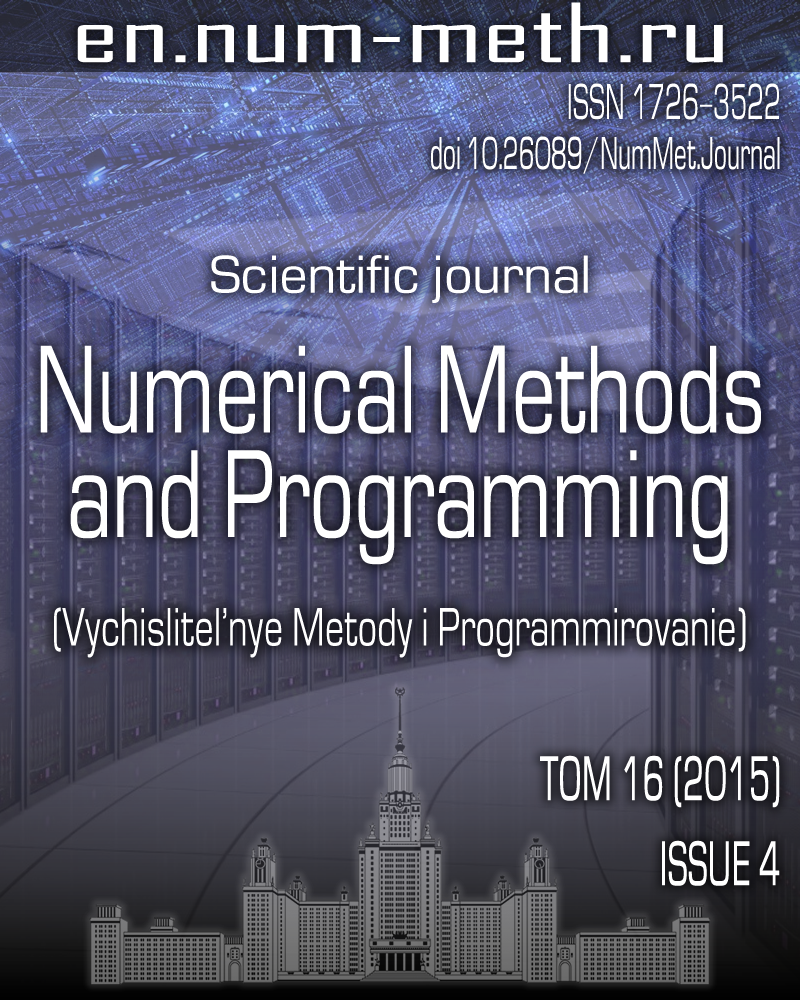DOI: https://doi.org/10.26089/NumMet.v16r455
Calculation of exact frequency-dependent rays when the solution of the Helmholtz equation is known
Keywords:
Helmholtz equation
exact frequency-dependent rays
ray theory
numerical methods
Abstract
A numerical method is proposed for the calculation of exact frequency-dependent rays when the solution of the Helmholtz equation is known. The properties of frequency-dependent rays are analyzed and compared with the classical ray theory and with the method of finite-difference modeling for the first time. In this paper we study the dependence of these rays on the frequency of probing signals and show the convergence of the exact rays to the classical rays with increasing frequency. A number of numerical experiments demonstrate the distinctive features of exact frequency-dependent rays, in particular, their ability to penetrate into shadow zones impenetrable for the classical rays.
Published
2015-10-14
Issue
Section
Section 1. Numerical methods and applications
References
- V. M. Babich and V. S. Buldyrev, Asymptotic Methods in Short-Wavelength Diffraction Theory (Nauka, Moscow, 1972; Springer, Heidelberg, 1989).
- Yu. A. Kravtsov and Yu. I. Orlov, Geometrical Optics of Inhomogeneous Media (Nauka, Moscow, 1980; Springer, Heidelberg, 1990).
- M. I. Protasov and K S. Osypov, “Frequency Dependent Ray Tracing for Irregular Boundaries,” Seismic Technol. 11 (3), 1-11 (2014).
- B. Biondi, “Solving the Frequency-Dependent Eikonal Equation,” 62nd Annual Int. SEG Meeting Expanded Abstracts 11, 1315-1319 (1992).
doi 10.1190/1.1821982 - T. L. Foreman, A Frequency Dependent Ray Theory , PhD Thesis (Univ. of Texas at Austin, Austin, 1987).
- M. J. Grote and I. Sim, Efficient PML for the Wave Equation , arXiv preprint: 1001.0319v1 [math.NA] (Cornell Univ. Library, Ithaca, 2010), available at
http://arxiv.org/abs/1001.0319v1. - X. S. Li and J. W. Demmel, “SuperLU_DIST: A Scalable Distributed-Memory Sparse Direct Solver for Unsymmetric Linear Systems,” ACM Trans. Math. Softw. 29 (2), 110-140 (2003).
- D. A. Neklyudov, I. Yu. Silvestrov, and V. A. Tcheverda, “A 3D Helmholtz Iterative Solver with a Semi-Analytical Preconditioner for Acoustic Wavefield Modeling in Seismic Exploration Problems,” Vychisl. Metody Programm. 15, 514-529 (2014).
- K. V. Voronin and S. A. Solovyev, “Solution of the Helmholtz Problem Using the Preconditioned Low-Rank Approximation Technique,” Vychisl. Metody Programm. 16, 268-280 (2015).
- A. Lomax, “The Wavelength-Smoothing Method for Approximating Broad-Band Wave Propagation through Complicated Velocity Structures,” Geophys. J. Int. 117 (2), 313-334 (1994).
- M. I. Protasov and V. A. Tcheverda, “True Amplitude Imaging by Inverse Generalized Radon Transform Based on Gaussian Beam Decomposition of the Acoustic Green’s Function,” Geophys. Prospect. 59 (2), 197-209 (2011).
- M. J. Woodward, “Wave-Equation Tomography,” Geophysics 57 (1), 15-26 (1992).


